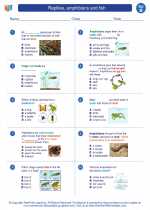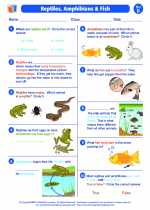Reptiles, amphibians and fish -> wetlands
Wetlands
Wetlands are areas of land that are saturated with water, either permanently or seasonally. They are critical ecosystems that provide a habitat for a diverse range of plant and animal species. There are several types of wetlands, including marshes, swamps, bogs, and fens, each with its own unique characteristics.
Importance of Wetlands
Wetlands play a crucial role in maintaining the health of the environment. They act as natural filters, helping to purify water by trapping sediments and removing pollutants. Additionally, wetlands provide flood control by absorbing and storing excess water during heavy rainfalls, thereby reducing the risk of flooding in surrounding areas. They also serve as breeding grounds for many species of wildlife, contributing to biodiversity and ecological balance.
Study Guide
- Types of Wetlands: Learn about the different types of wetlands, including marshes, swamps, bogs, and fens. Understand the unique features and characteristics of each type.
- Functions of Wetlands: Explore the various ecological functions of wetlands, such as water purification, flood control, and habitat provision. Understand the importance of wetlands in maintaining a healthy environment.
- Plant and Animal Species: Research the plant and animal species that inhabit wetlands. Identify key species and their adaptations to the wetland environment.
- Human Impact: Investigate the human impact on wetlands, including habitat destruction, pollution, and conservation efforts. Understand the importance of preserving and protecting wetland ecosystems.
- Wetland Conservation: Explore methods and initiatives aimed at conserving and restoring wetlands. Learn about the role of government agencies, environmental organizations, and community involvement in wetland conservation.
[Wetlands] Related Worksheets and Study Guides:
.◂Science Worksheets and Study Guides Second Grade. Reptiles, amphibians and fish

 Activity Lesson
Activity Lesson
 Worksheet/Answer key
Worksheet/Answer key
 Worksheet/Answer key
Worksheet/Answer key
 Worksheet/Answer key
Worksheet/Answer key
 Worksheet/Answer key
Worksheet/Answer key
 Vocabulary/Answer key
Vocabulary/Answer key
